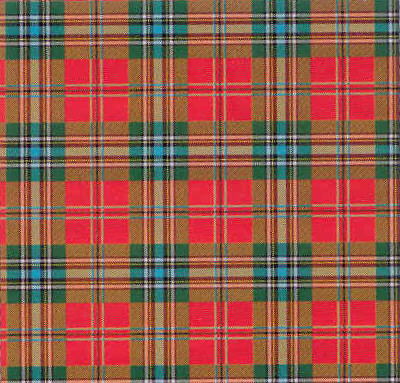Pict Clanns of Albann

Clann MACLEAN

When a record, states "nothing is known for certain of the origin of this clan", one can be sure that it was Pict.
Tradition tells us the MacLeans were one of the numerous Pict families that were expelled from Moray by Malcolm IV in the 1100s. They were resettled in the south amidst the Britons of Perthshire, as were many other 'politically unreliable' northern Picts. They were a populous and thriving clan, notable for their colourful legends. Those who look of romance in Highland clans will be enthralled by the many stories of the MacLeans.
Their first known ancestor was a Dugald, 'dark stranger' in P-Celtic. The clan takes its name from Gill'Eathain na Tuaigh, (Gillian of the Battle-axe), in commemoration of their first chief, seven generations descended from Dugald. In 1263, Gillian fought in the army of Alexander III against the Norsemen at the Battle of Largs. Gillian's grandson similarly fought for Bruce and Scotland at Bannockburn. He married a daughter of the Lord of the Isles, and had three sons, including his heir, Iain Dubh. Through this marriage, the MacLeans acquired the lands of Duart, in eastern Mull, from which they would expand into one of the great powers of the western Isles.
Iain Dubh had two sons, Lachlan Lubanach (the Crafty), who succeeded him in Duart, and Hector Reaganach (the Stubborn), ancestor of the house of Lochbuie, and the MacLeans of Urquhart. These brothers attached themselves to the MacDonald Lord of the Isles, thereby becoming influential enough to expel the previous inhabitants, the MacKinnons.
The MacLeans were divided into four main branches, corresponding to their diverse geographical territory; Duart, Coll, Lochbuie and Ardgour. The MacLean lands, although separated by water, formed a single geographic concentration, with the exception of their northern lands in Glen Urquhart. Their southern lands were wild and infertile, mostly rough pasture or woodland. The only arable land lay along the coast on the Island of Mull. The one abundant harvest was fish from the sea and the nearby lochs.
The MacLeans of Duart were the senior line. Lachlan was succeeded by his son Eachan Ruadh nan Cath (Red Hector of the battles) in 1405, and he was killed in the Battle of Harlaw in 1411. Red Hector's son, Lachlan, had several sons, among them the progenitors of the branches of Ardgour and Coll. His grandson, Hector Odhar, 10th Chief of Duart, was killed at Flodden in 1513.
This chief's 'natural' son, Lachlan Cattanach, married a daughter of the Campbell Earl of Argyll, with disastrous consequences. According to the story, he marooned his wife on a tidal island in an effort to drown her. Some fishermen happened along and saved her. In revenge, her brother, Sir John Campbell, murdered MacLean in Edinburgh in 1523.
By the 1500s, the MacLeans were profiting hugely from the collapse of the MacDonald empire. they soon felt strong enough to attack the MacDonald's trade routes at Jura and Islay. Sir Lachlan Mor MacLean, 14th Chief of Duart, fought in the royal army against the Catholic Lords at Glenlivet in 1594, but survived this defeat, only to be killed four years later in battle against the MacDonalds at Tràigh Ghruineard in Islay.
Lachlan's grandson and namesake, was created a baronet in 1631. He fought under Montrose, so Argyll and his Covenanters laid waste to MacLean lands. In revenge, Sir Lachlan razed Castle Campbell (near Dollar) to the ground. His son and heir, Hector, was killed fighting in the royal army at the Battle of Inverkeithing in 1651. Hector's grandson, Sir John MacLean, 4th baronet, fought at the head of his clan for the Stuarts at Killiecrankie and Sheriffmuir. After 1688, Argyll obtained the entire Duart estate with little difficulty.
Sir John's son, Hector, was created Lord MacLean by the exiled Pretender, but was arrested before he could join Prince Charlie in 1745. However, the clan fought at Culloden under MacLean of Drimmin. As with other Catholic Highlanders, many MacLeans fled Britain after Culloden for the continent, and served with distinction in German or Swedish armies. Archibald MacLean, premier lieutenant of the Prussian Life Guards, won the Iron Cross in the Franco-Prussian War.
Duart Castle had been occupied by Hanoverian troops after Culloden, and fell into ruin until it was repurchased and restored by MacLean of Duart in 1911. In 1912, Fitzroy MacLean 12th baronet and 26th Chief of the MacLeans was restored to his ancient seat at Duart Castle with a fitting ceremony.